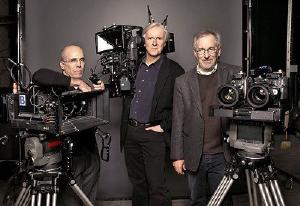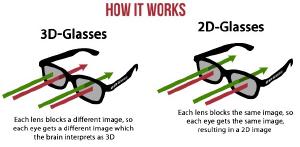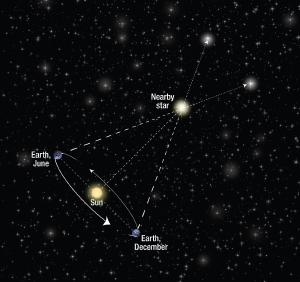Blog
How We See Stars in 3D
4 August 2015
 NASA
NASAAstronomers can measure the distance to about a billion stars using the same effect that lets you enjoy a 3D summer blockbuster.
There are lots of clues our minds use to determine whether something is close to us or far away, such as its apparent size, its position relative to other objects and its motion. But since humans typically have two eyes, we can also gauge an object’s distance using an effect known as parallax. When you walk along a sidewalk, you’ll notice that closer objects appear to move past you more quickly than more distant objects. This means that if you look at an array of objects from two slightly different positions, the closer objects will appear to have shifted more than distant objects. Since your eyes have different positions, each eye gets a slightly different view of the world, and closer objects will appear more different than farther objects. Our brains combine these two views to give us a 3D view of the world.
 Katzenberg3D
Katzenberg3D3D movies take advantage of this effect to give an “in your face” movie experience. Rather than filming one movie, directors of 3D movies film two, where each movie is filmed from a slightly different perspective (typically the same separation as human eyes). Once in the theater, the two perspectives are shown together. By itself that would just make for a blurry movie, so they are shown on a special screen so that the light reflected from one projector is polarized differently than the other. Polarization is a property of light orientation that our eyes don’t typically notice, but polarized light can be blocked by things like polarized sunglasses.
 Karen Kavett
Karen KavettThis is why you have to wear special glasses in a 3D movie. These glasses are similar to sunglasses, but each lens blocks a different orientation of light. This ensures that each of your eyes only sees one of the two movies. Since each movie has a different perspective, your eyes have different views similar to the real world, and your brain integrates them as a perception of depth.
 NASA, ESA, and A. Feild (STScI)
NASA, ESA, and A. Feild (STScI)So how does this effect work for stars? You don’t notice any depth to the night sky because your depth perception only works for a distance of about 6 meters (20 feet), and the stars are light years away. But because the Earth revolves around the Sun, our view of the stars changes slightly over the course of a year. So over the course of a year the closer stars will appear to shift relative to more distant stars. This shift is incredibly small. If you held a single sheet of paper edge-on at arm’s length, the thickness of the paper would be about three times wider than the largest shift of the closest star.
Astronomers have been able to measure the parallax of the closest stars for 80 years. We’re now able to measure stellar distances to more than 1,600 light years. The Hipparcos spacecraft, for example, measured the distances of about 2.5 million stars to varying degrees of accuracy. The Gaia spacecraft is expected to measure the distances of a billion stars.
As impressive as that is, you might be wondering how we measure the distances of farther stars? After all, our galaxy alone is 100,000 light years across. That’s an interesting story for another time.